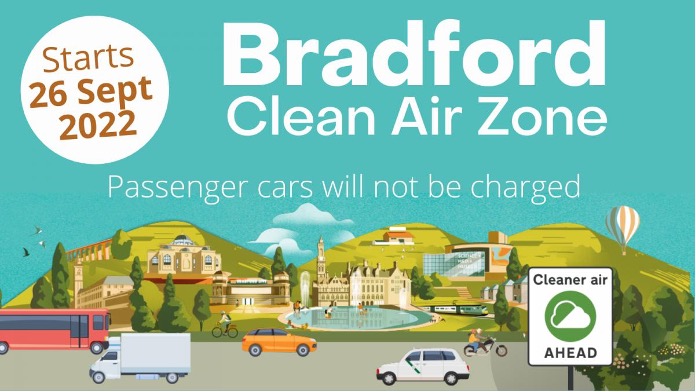Launching a Clean Air Zone in Bradford
“When addressing air pollution, we also address a critical and easy-to-implement solution to climate change. Short-lived climate pollutants are negative in all senses, and we have proven technologies and policies to economically and immediately reduce air pollution,” UN Environment climate change specialist Niklas Hagelberg.
Parts of Bradford District have been found to have higher than the legal limits of nitrogen dioxide, a gas known to contribute to a range of health issues, and to aggravate existing respiratory diseases such as asthma.

In Bradford there is greater understanding of the impact of air quality on the health of the population because we have Born in Bradford (BiB). BiB is a birth cohort study following the lives of 13,500 children and their families who were born in the city between 2007-2011. Its aim is to explore what keeps some families healthy and why others fall ill. Bradford has high levels of childhood asthma, and researchers have estimated that 38% of all annual childhood asthma cases may be due to negative health effects of nitrogen oxide or nitrogen dioxide (Full-Chain Health Impact Assessment of Traffic-Related Air Pollution and Childhood Asthma by Haneen Khreis, Kees de Hoogh, and Mark J Nieuwenhuijsen).
Bradford, like many other local authorities in the UK, has been required by the government to produce an air quality plan to show how it plans to bring the levels of nitrogen dioxide within legal limits in the shortest possible time.
Air quality monitoring studies have identified a Clean Air Zone as the most effective method of reducing nitrogen dioxide and improving air quality, as quickly as possible.

A Clean Air Zone (CAZ) is a defined area where targeted action is taken to improve air quality. Through the use of a daily charge for entering the zone, the Council will encourage people and businesses who own the most polluting vehicles that travel through the District to consider upgrading their vehicles to meet our new air quality standard. Bradford’s CAZ started on 26 September 2022, and is a C+ zone to ensure we meet the legal limits for pollution in the district. This is based on a Class C Clean Air Zone which means there are charges for all non-compliant vehicle types with the exception of passenger cars and motorbikes.
The Bradford CAZ covers the area inside, and including, the Bradford outer ring road. It also extends out along the Aire valley corridor, to include Shipley and Saltaire. The Horton Park neighbourhood that is the focus of Bradford’s LIFE CRICITICAL project lies just inside the CAZ.
In 2018, air quality levels in the park recorded 16 NO2 µg/m3, but just 300 metre away, the junction of Horton Park Avenue and Great Horton Road records levels of 37 NO2 µg/m3.
The climate sensors installed in support of LIFE CRITICAL will add to the data being modelled to explore how the CAZ is affecting air quality in the Horton Park neighbourhood, as well as demonstrating the value our urban parks contribute to local air quality and climate change mitigation.
Through the use of a daily charge for entering the CAZ, Bradford Council will encourage affected vehicle owners to consider upgrading their vehicles to compliant standards, and grants have been made available to help make changes affordable. Bradford district now has one of the cleanest and best taxi fleets in the country with 92% of taxis being emissions compliant, with the support of £4m of electric vehicle grants to achieve a 25% electric fleet. We have seen the upgrade or replacement of over 370 buses ensuring all scheduled and tendered services meet Clean Air Zone standard. 33 new electric buses will start running busy routes next year. £8.4m in grants have been allocated to assist businesses to upgrade over 20% of all lorries registered in the District. Over 3,400 grants have been applied for in the funding categories (HGV, Bus, Coach, LGV, Minibus and Taxis.)
Get in touch to learn more from Bradford’s key takeaways on the launch of their Clean Air Zone!
